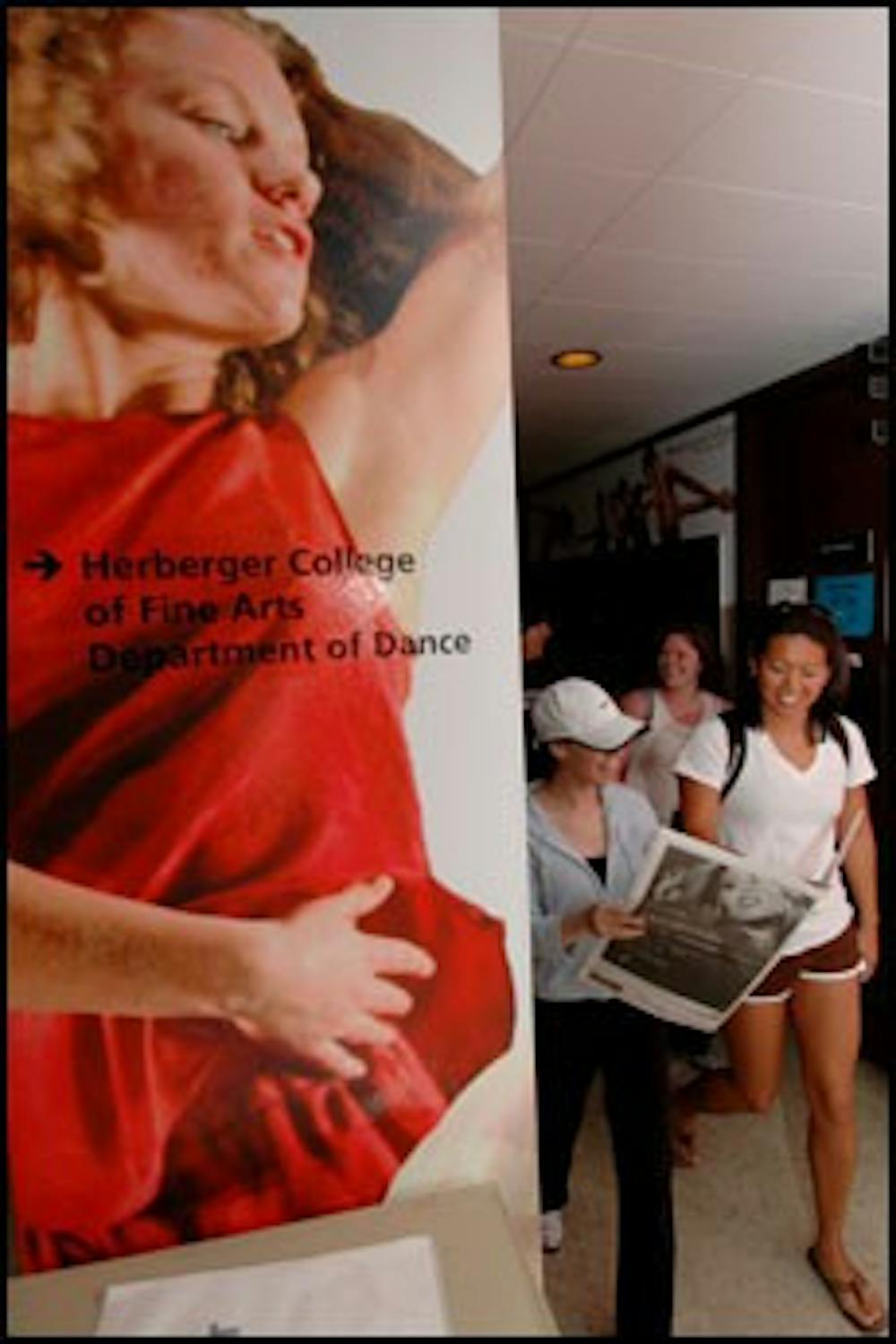ASU's dance department will no longer offer three separate concentrations, but will instead combine them under one bachelor's degree in dance, beginning this fall.
Pegge Vissicaro, interim department chair at the Herberger College of Fine Arts Department of Dance, said right now, students are admitted in pre-dance status. During their sophomore year, students petition for a concentration in dance performance, dance studies, choreography or dance education.
"If I were a student, I wouldn't be happy with this system," Vissicaro said. "Now, if prospective students meet the audition criteria, they become a dance major from the beginning."
The concentration in dance education, though, will remain separate.
Vissicaro said a formal letter would be sent to students next week explaining the changes. Current students already in a concentration would not be affected, she added.
Also, pre-dance students can go into the new dance major this fall or choose the petition process, she said.
"After the first two years, if incoming students like one area, we'll shape their final project towards that," Vissicaro added.
But some students said they'd prefer sticking to the petition process. Pre-dance freshman Katie Schwab said having a major from the beginning is good, but "most students pretty much get whatever concentration they want anyway."
Pre-dance freshman Trista Greco said she'd rather concentrate on choreography.
But Gina Stephens, assistant dean at the Herberger College, said they are doing a disservice by making students specialize in one field.
"Students need to have a well-rounded education to be marketable," she said. "They need to learn choreography along with teaching, for instance."
Dance performance sophomore Megan Bormann agreed the changes would give students a comprehensive education. But she said tracks give students focus.
"Being a dance performance student appeals to me," she said. "I'm not as interested in choreography or dance studies."
Some faculty members said the administration wanted to help smooth the process.
"The petitioning process is hard to administer, and even after that, it's laborious to keep track of students following their concentration," said Naomi Jackson, a dance history professor. "So from the University perspective they prefer students start out with a major."
Assistant professor Mary Fitzgerald said combining a breadth of theoretical and practical classes "is a good thing to try."
Jackson said she was glad the department is retaining the idea of specialization even without a formal track system.
But she said having students wait to get admitted into a concentration gave the student and faculty time to figure out what the student wanted to get out of their program.
"By auditioning people straight into the program, we may not necessarily allow students to flower," she said. "I don't like the idea of one-day auditions where either you get in or you don't."
There will be no changes to the master's program for dance.
Reach the reporter at sonu.munshi@asu.edu.




